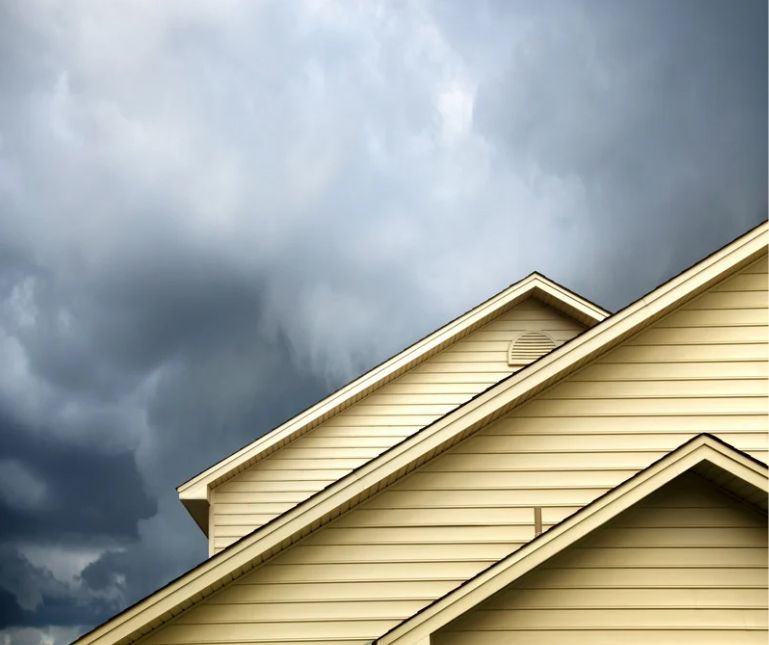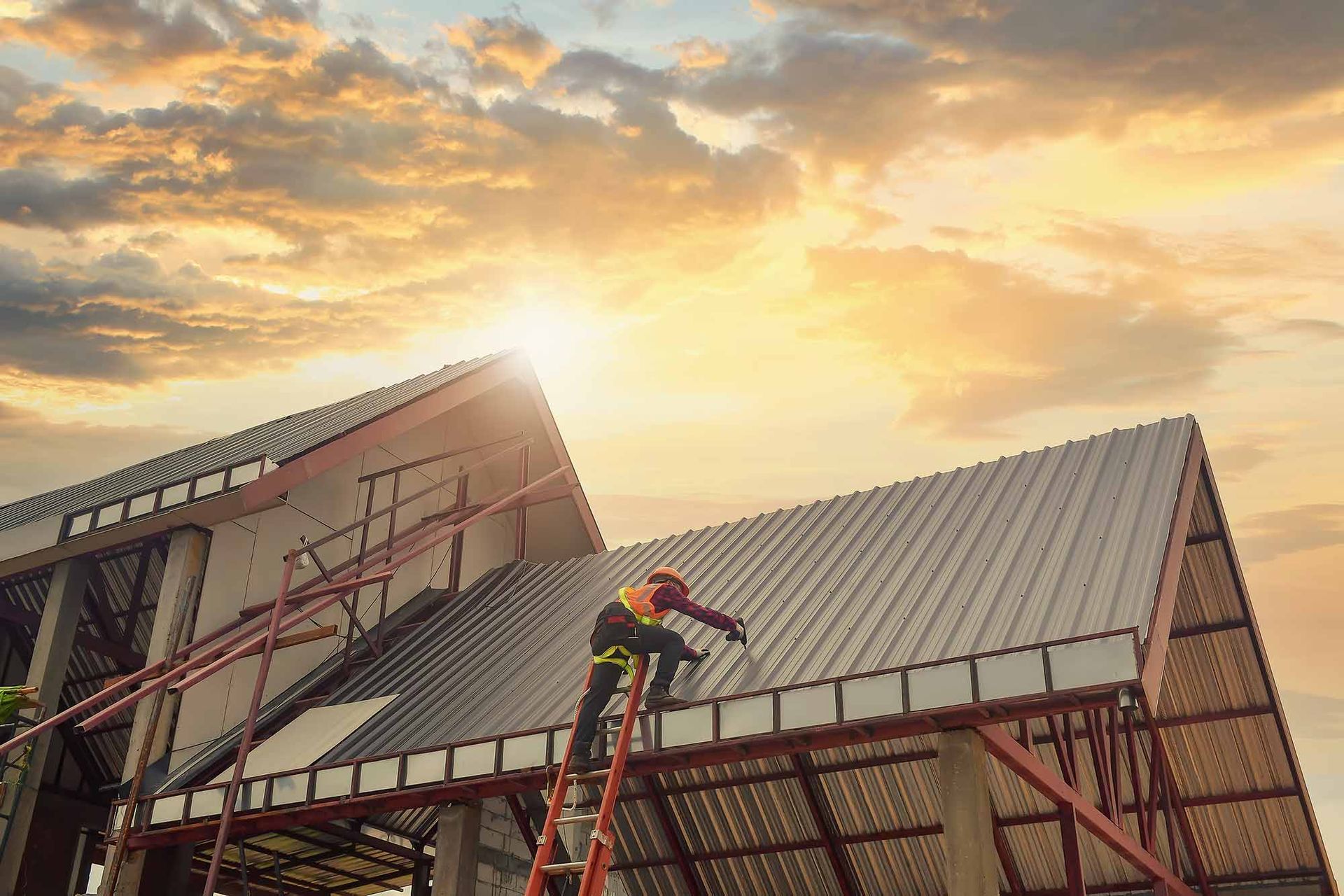AT&R Insurance
508-881-1033
Supporting copy for the Request Service
call out button.
AT&R Insurance
Blog

By Agostinelli, Teller & Ryan Insurance
•
March 27, 2025
When it comes to home insurance, one of the most pressing questions homeowners have is, “Are natural disasters covered?” After all, the unexpected can happen at any time, and the impact of natural disasters can be devastating. Understanding what your home insurance policy covers—and what it doesn’t—is essential for protecting your home and belongings. In this blog, we’ll explore various natural disasters, how they are treated by standard home insurance policies, and whether you need additional coverage to ensure you’re adequately protected. The Basics of Home Insurance Coverage What Does Home Insurance Typically Cover? Home insurance is designed to protect your home and personal belongings from a range of risks. Most standard policies cover a variety of perils, including: Fire and Smoke Damage: Damage caused by fire or smoke is typically covered, allowing you to repair or rebuild your home. Theft and Vandalism: If someone breaks into your home and steals your possessions, your policy can help reimburse you for those losses. Wind and Hail Damage: Damage from windstorms or hail is usually covered under a standard policy, including damage to your roof, siding, and windows. Liability Protection: Home insurance also provides liability coverage in case someone is injured on your property and decides to sue you. However, when it comes to natural disasters, coverage can vary significantly based on the type of disaster and your specific policy. Let’s break down some of the most common natural disasters and how they are typically treated in home insurance policies. Floods: Not So Easy to Cover Understanding Flood Insurance Floods can be incredibly destructive, and unfortunately, they are not covered by standard home insurance policies. This is a crucial point for homeowners to understand. If you live in a flood-prone area or near a body of water, it’s essential to consider obtaining separate flood insurance. Here are some key points to keep in mind: National Flood Insurance Program (NFIP): The NFIP is a federal program that offers flood insurance to homeowners, renters, and businesses. If you live in a participating community, you can purchase flood insurance through the NFIP. Coverage Limits: Flood insurance policies generally have specific coverage limits for both the structure and personal property. It’s important to review these limits to ensure they meet your needs. Waiting Period: Most flood insurance policies have a waiting period of 30 days before coverage takes effect. Be sure to plan ahead and secure your policy well in advance of any potential flooding. Understand Your Risk: Even if you don’t live in a high-risk flood zone, floods can occur anywhere. Consider your risk level and discuss flood insurance options with your insurance agent. Earthquakes: A Different Kind of Risk Earthquake Insurance Explained Like floods, earthquake damage is typically not covered by standard home insurance policies. If you live in an area prone to seismic activity, you may want to consider purchasing earthquake insurance. Here’s what you should know: Separate Policies: Earthquake insurance is usually sold as a separate policy or endorsement to your standard home insurance. Check with your insurer to see what options are available. Coverage Limits and Deductibles: Earthquake insurance policies often come with higher deductibles than standard home insurance. It’s essential to review your policy terms and understand what is and isn’t covered. Types of Coverage: Earthquake insurance typically covers damage to your home’s structure, personal belongings, and additional living expenses if you need to temporarily relocate due to damage. Evaluate Your Risk: If you live in a seismic zone, consider the likelihood of an earthquake and the potential damage it could cause. Investing in earthquake insurance can provide security and financial protection. Hurricanes: Coverage Can Vary Navigating Hurricane Coverage Hurricanes can cause severe damage, so understanding how your home insurance policy handles hurricanes is vital. Here are some key points to consider: Wind Damage Coverage: Most standard home insurance policies cover wind damage caused by hurricanes. This includes damage to your roof, siding, and windows. However, it’s important to review your policy for specific limits and exclusions. Flooding from Hurricanes: While wind damage may be covered, flooding caused by a hurricane is not. If your home is at risk of flooding during a hurricane, you will need a separate flood insurance policy, as mentioned earlier. Hurricane Deductibles: Some states with a high risk of hurricanes may have specific hurricane deductibles. These deductibles can be a percentage of your home’s insured value rather than a flat dollar amount. Be sure to understand how your deductible works in the event of a hurricane. Prepare for the Worst: If you live in a hurricane-prone area, consider taking proactive steps to protect your home, such as reinforcing your roof, installing storm shutters, and securing loose outdoor items. Tornadoes: What You Need to Know Tornado Coverage Basics Tornadoes can strike quickly and cause significant damage to homes. Fortunately, most standard home insurance policies cover tornado damage, but there are key considerations: Wind Damage Coverage: Tornadoes are classified as windstorms, so damage from tornadoes is typically covered under most home insurance policies. Debris Removal: Many policies also cover the cost of debris removal after a tornado, which can help you manage cleanup efforts. Additional Living Expenses: If your home is severely damaged and you need to temporarily relocate, your policy may cover additional living expenses, such as hotel stays and food costs. Review Your Policy: As with any natural disaster, it’s important to review your policy to understand your coverage limits and any exclusions that may apply. Wildfires: Coverage Considerations Wildfire Insurance Insights In areas prone to wildfires, homeowners need to be aware of how their insurance policy handles fire damage. Here are some key points: Fire Damage Coverage: Most standard home insurance policies cover fire damage, including damage caused by wildfires. However, the extent of coverage may vary based on your specific policy and location. Risk Assessment: If you live in a high-risk wildfire area, your insurer may assess your property’s risk and adjust your premium accordingly. Homes in fire-prone areas may face higher premiums due to the increased risk. Mitigation Measures: Taking steps to reduce wildfire risk—such as creating defensible space around your home, using fire-resistant materials, and maintaining a well-kept landscape—can help lower your insurance costs and improve your safety. Review Your Policy: As with other natural disasters, be sure to review your policy to understand your coverage for fire damage and any specific exclusions or limitations. Additional Coverage Options Exploring Endorsements and Riders If you live in an area prone to natural disasters, you may want to consider additional coverage options to enhance your protection. Here are some options to explore: Endorsements: Many insurance companies offer endorsements that can be added to your policy to provide additional coverage for specific risks, such as earthquakes or floods. Riders: Riders are similar to endorsements and can provide additional coverage for personal belongings or specific types of damage. For example, you might consider a rider for valuable items like jewelry or art that may not be fully covered under a standard policy. Comprehensive Coverage: Some insurers offer comprehensive policies that provide broader coverage for natural disasters and other perils. Be sure to discuss your options with your insurance agent to find a policy that meets your needs. Stay Informed: Regularly review your coverage and stay informed about changes in your area’s risk of natural disasters. This will help you make informed decisions about your insurance needs. Preparing for Natural Disasters Act Before Disaster Strikes Preparation is key when it comes to natural disasters. Here are some proactive steps you can take to protect your home and belongings: 1. Create an Emergency Plan: Develop a family emergency plan that outlines how to respond in the event of a natural disaster. Ensure everyone in your household knows what to do and where to go. 2. Inventory Your Belongings: Keep a detailed inventory of your home’s contents, including photos and receipts. This will help expedite the claims process if you need to file a claim for damaged or lost items. 3. Secure Important Documents: Store important documents, such as insurance policies, identification, and financial records, in a safe place. Consider keeping digital copies in a secure cloud storage service. 4. Stay Informed: Stay informed about weather forecasts and potential natural disasters in your area. Sign up for local alerts and warnings to stay updated on any imminent threats. Understanding whether natural disasters are covered by your home insurance policy is crucial for protecting your property. While standard policies cover many perils, specific disasters like floods and earthquakes often require additional coverage. By familiarizing yourself with your policy, exploring endorsements, and taking proactive steps, you can ensure that you’re adequately protected against the unexpected. Home insurance is not just a policy; it’s a vital safety net that provides security during uncertain times. By proactively addressing your coverage needs and staying informed about natural disaster risks, you can feel confident in your ability to protect your home and loved ones. Remember, preparation is key, and having the right insurance in place can make all the difference when disaster strikes. Your home is your sanctuary, and with the right coverage, you can safeguard it against life’s unpredictable moments.

By Agostinelli, Teller & Ryan Insurance
•
February 27, 2025
Agostinelli Teller & Ryan Insurance, AT&R Insurance, Ashland MA Insurance, Ashland Insurance, Massachusetts Insurance, Auto Insurance Ashland, Home Insurance Ashland, Business Insurance Ashland, Insurance Agency Ashland, Insurance Coverage Massachusetts, Auto insurance premiums, insurance cost factors, driving history impact, vehicle insurance rates, auto coverage options, deductible and premium, credit score insurance, location and insurance, car insurance discounts, safe driver savings, multi-policy discount, good student discount, low mileage insurance, insurance risk assessment, premium calculation process, car insurance tips, lowering insurance costs, choosing coverage wisely, high vs low deductible, vehicle safety ratings, accident risk factors, policy review benefits, insurance savings strategies, understanding auto premiums, tailored insurance coverage

By Agostinelli, Teller & Ryan Insurance
•
January 31, 2025
Agostinelli Teller & Ryan Insurance, AT&R Insurance, Ashland MA Insurance, Ashland Insurance, Massachusetts Insurance, Auto Insurance Ashland, Home Insurance Ashland, Business Insurance Ashland, Insurance Agency Ashland, Insurance Coverage Massachusetts, social media presence, brand awareness, customer engagement, website traffic, search engines, competitive advantage, cost-effective marketing, digital age, targeted advertising, active users, loyal following, online community, customer retention, valuable feedback, increased conversions, SEO improvement, social media platforms, industry leader, traditional marketing, content creation, targeted ads, audience engagement, brand visibility, online branding, business growth, business insurance, commercial insurance, small business coverage, business liability, risk management

By Agostinelli, Teller & Ryan Insurance
•
January 10, 2025
Agostinelli, Teller & Ryan Insurance, Ryan Insurance, Teller Insurance, Insurance in Ashland, Ashland, MA, Ashland MA, MA, Winterize, frozen pipes, plumbing tips, protect pipes, pipe prevention, winter guide, pipe insulation, drain faucets, prevent bursts, energy savings, repair prevention, sprinkler winterizing, seal drafts, winter safety, pipe winterizing, leak detectors, winter maintenance, thermostat settings, irrigation care, outdoor faucets,

By Agostinelli, Teller & Ryan Insurance
•
December 11, 2024
Agostinelli Teller & Ryan Insurance, AT&R Insurance, insurance in Massachusetts, Ashland MA insurance, Agostinelli Teller & Ryan coverage, auto insurance in Ashland, home insurance Massachusetts, Massachusetts insurance agency, insurance policies Ashland, AT&R Insurance quotes, save money on home insurance, home insurance savings tips, reduce home insurance premiums, affordable home insurance, lower home insurance cost, shop for home insurance quotes, compare home insurance rates, home insurance discounts, increase home insurance deductible, bundle home and auto insurance, home security and insurance savings, improve home security for insurance, save on home insurance premiums, credit score and home insurance rates, tips for cheaper home insurance, cost-effective home insurance options, home insurance cost-saving strategies, lower home insurance deductible, insurance bundling discounts, how to reduce home insurance costs.

By Agostinelli, Teller & Ryan Insurance
•
October 28, 2024
Because seasonal changes affect your vehicle in a multitude of ways, it’s important to prepare for the transition from summer to fall. You’ll want to keep up on regular vehicle maintenance, while also paying close attention to season-specific car care tasks. Essential Fall Vehicle Maintenance Tips Check the Fluids Checking your vehicle’s fluids is one of the most critical car care routines. The various fluids lubricate, cool, and perform other vital functions that help keep your car running and driving. Take a few minutes to check the fluids under the hood, including the engine oil, coolant, and brake fluid. You’ll also want to check the automatic transmission fluid (if your car has a dipstick) and the power steering fluid (if your car has hydraulic power steering). Warning: Never remove the cooling system cap when the engine is hot. Severe injury may result. Only check the coolant level and condition when the engine is cool. Many vehicles also have assemblies, such as the differential and transfer case, that are located underneath the vehicle. You should check the fluids in these units regularly. If you have the know-how, you can safely raise and support the vehicle, then check the fluids yourself. You can also choose to have a professional do the job for you. Inspect the Tires We get it—tires are about as exciting as an afternoon at the DMV. However, that doesn’t mean they should be ignored. Tires are super important because they affect the braking ability, handling performance, and overall safety of your vehicle. Take a few moments to inspect your car’s tires to ensure they’re in good condition. First, you’ll want to check tread depth using a dedicated gauge. Take the measurement at three points across the tire: the outer tread, the center tread, and the inner tread. If there’s 4/32” of tread remaining at any point, most professionals recommend replacing the tires. A tread depth reading of 2/32” or less indicates the tires are a safety hazard and should be replaced immediately. You should also check the tire pressure with a dedicated gauge. When checking the pressure, ensure that the tires are inflated to the specification listed on the placard inside the door jamb. Do NOT set the pressure to the reading on the tire’s sidewall—that’s the maximum pressure. If the pressure is too low, use an air compressor (or an air pump at the gas station) to add air. In the case that the pressure is too high, you can let air out of the tire by pressing down on the tip of the valve stem core with a pocket screwdriver. Make Sure All of the Lights Work Sadly, the long summer days will soon be coming to an end. Because nighttime comes earlier during the fall, you’re more likely to be driving when it’s dark out. Before that happens, get a friend to help you make sure all of your car’s exterior lights (including the brake lights and reverse lights) are working correctly. A non-functional light usually indicates a burnt-out bulb. While replacing a bulb is usually a simple task, there are instances where the job can be difficult. For example, on some vehicles, the front fascia must be removed to access the headlight bulb. Bulb replacement instructions can usually be found in your car’s owner’s manual. By reviewing the instructions, you’ll get an idea of whether the job is something you can handle on your own. You can always have a professional change the bulb if the task seems too difficult. Check the Wiper Blades The fall season often brings rain and sometimes even snow. You’ll want to make sure your car’s wiper blades are in good shape to deal with these conditions. To check the wiper blades, turn on both the wipers and windshield washers. A good set of blades should produce a streak-free sweep and leave the windshield clear. Replace the wiper blades if they do not perform well. You’ll also want to consider the washer fluid. There are winter blends, which are designed to resist freezing, and summer blends for warmer weather. When the temperatures start to drop, you’ll want to make sure you have a winter blend in your car’s washer fluid reservoir. Inspect the Brakes We don’t need to remind you of the importance of your car’s brakes, do we? You (or your mechanic) should check the brakes a least twice a year to ensure they’re in good condition. Right now, before the snow starts to fly, is the perfect time to take a peek. How do you know when your brake pads are worn out? When there’s 4mm of friction material remaining, most professionals recommend replacing the brake pads (and usually replacing or resurfacing the brake discs). A reading of 3mm or less indicates the brake pads are a safety hazard and should be replaced immediately. Make Sure the Heater is Working If you’re like most drivers, you didn’t turn your car’s heater on at all during the summer. But soon, the weather will get cold and you’ll be pining for a warm cabin once again. It’s a good idea to test your vehicle’s heater before the temperatures start to drop. Automotive heating systems rely on hot engine coolant, so if the heater is blowing cold air, you likely have a problem somewhere within the cooling system. For example, the thermostat may be stuck open, the water pump may be faulty, or the heater core could be clogged. If you have the know-how, you can troubleshoot the problem yourself. Otherwise, you may want to have a professional diagnose and repair the issue. Take Care of Any Outstanding Maintenance Remember that booklet, called the owner’s manual, that’s buried in your glovebox? Dust it off and turn to the section that covers the manufacturer’s maintenance schedule—you’ll find the suggested intervals for the routine services the automaker recommends. Is your car due (or overdue) for service? Then take care of it now. Lack of maintenance is one of the most common—if not the most common—reasons for mechanical breakdowns. Address Any Known Problems Car problems left ignored often snowball into big-time concerns. For example, a leaking radiator hose can lead to a low coolant level, overheating, and catastrophic engine damage. Ignoring issues can also leave you stranded on a chilly fall morning. Address any known problems now to prevent further headaches. Store Classic Cars and Other Toys Most people put their classic cars and other toys into storage once summer is over. Of course, the best place to store your ride is in the garage. But if you don’t have access to covered parking, a car cover is the next best option. Be sure to select the correct type of cover; some are designed for outdoor use, while others are for indoor use. Also, park the vehicle in a safe location that’s protected from the elements as much as possible. Then, follow the product instructions to install and secure the cover. Accessorize for the Season You might start accessorizing for the fall season by picking up, say, a fluffy scarf or warm beanie. While you’re at it, don’t forget that you can also accessorize your car with practical upgrades, such as floor mats and seat covers. Making the necessary adjustments to your vehicle whenever the season changes is one way to keep it around for a long time. Source: https://www.carparts.com/blog/five-fall-car-care-tips/

By 7007279964
•
September 5, 2024
Ashland MA, Agostinelli Teller Ryan Insurance, Teller Insurance, Agostinelli Insurance, Ryan Insurance, flood insurance massachusetts, flood insurance ashland, ashland ma flood insurance, business insurance MA, business insurance in Ashland, best insurance company in massachusetts, business flood insurance, flood insurance coverage, commercial property insurance, NFIP flood definition, causes of flooding, flood damage protection, storm surge insurance, heavy rain flooding, overflowing rivers, flood insurance requirements, commercial flood insurance, flood insurance policy, mudslide insurance, hurricane flood protection, business owners policy flood, high-risk flood areas, flood insurance peace of mind, federal flood insurance, flood insurance for businesses, flood insurance for office, flood insurance for buildings, flood insurance after snowmelt, urban development flooding, blocked storm drain flooding, commercial flood coverage.

August 12, 2024
Agostinelli Teller Ryan Insurance, AT&R Insurance Ashland MA, ATR Insurance Ashland, Ashland MA insurance agency, Agostinelli insurance, Teller & Ryan Ashland, ATR Insurance MA, MA home and auto insurance, Agostinelli Teller Ryan agency, Ashland insurance, ATR Insurance Massachusetts, Ashland MA insurance, Agostinelli Teller Ryan, AT&R Insurance, Ashland MA auto insurance, dog-friendly car tips, auto insurance for pet owners, car interior protection, dog-proof your car, pet hair removal car, seat covers for dogs, dog seat belt safety, car cleaning tips for pet owners, dog travel accessories, vehicle fabric protection, all-weather floor mats, car insurance advice, pet-related car damage, car protection for pets, car seat covers, fabric guard for vehicles, car windows protection, drool-proof car windows, dog-safe road trips, pet-friendly vehicles, dog travel tips, accident prevention with pets, car care for pet owners, vehicle upholstery protection, dog car safety gear, cleaning dog mess in car, dog car mess pr

By 7007279964
•
July 23, 2024
ATR Insurance, Agostinelli Teller & Ryan Insurance, Teller Insurance, Ryan Insurance, Agostinelli Insurance, Ashland MA, Massachusetts, MA, Renters Insurance Massachusetts, Renters Insurance near me, Renters insurance for roommates, Roommate renters insurance, Renters insurance policy roommates, Shared renters insurance policy, Individual renters insurance policy, Renters insurance coverage roommates, Renters insurance liability roommates, Roommates insurance coverage, Roommates insurance protection, Roommates insurance policy tips, Renters insurance shared liability, Renters insurance coverage limits, Renters insurance valuable items, Renters insurance electronics coverage, Renters insurance jewelry coverage, Renters insurance artwork coverage, Renters insurance claims roommates, Renters insurance premium rates roommates, Renters insurance policyholder roommates, Renters insurance communication roommates, Renters insurance deductible roommates, Renters insurance provider roommates, Renters insurance tips for

By 7007279964
•
June 26, 2024
Roof replacement is a significant home improvement project that can enhance your property's value, energy efficiency, and overall protection. Whether your current roof has reached the end of its lifespan or you're looking to upgrade to a more durable material, understanding the roof replacement process is crucial. In this blog post, we will guide you through the steps involved in a roof replacement, from start to finish. Initial Roof Assessment : The first step in the roof replacement process is a comprehensive assessment. A professional roofing contractor will inspect your existing roof to determine its condition and identify any underlying issues. This assessment helps in creating a plan for the replacement project. Material Selection : Once the assessment is complete, you'll work with your roofing contractor to choose the right roofing material for your home. Options include asphalt shingles, metal roofing, clay tiles, and more. Consider factors like durability, aesthetics, and budget when making your selection. Permitting and Documentation : In many areas, a roof replacement project requires permits and documentation. Your roofing contractor will handle the necessary paperwork to ensure compliance with local regulations and codes. Tear-Off or Overlay : Depending on the condition of your existing roof, you may have the option to tear off the old roofing material or overlay the new material on top. Your contractor will advise you on the best approach based on the assessment. Preparation and Protection : Before installation begins, your contractor will prepare the site by protecting your property, landscaping, and adjacent areas. This typically involves laying down tarps and ensuring proper safety measures. Installation : The installation process involves applying the new roofing material according to manufacturer guidelines and industry best practices. This includes laying underlayment, flashing, and the roofing material itself. Quality Inspection : After the new roof is installed, a thorough quality inspection will be conducted to ensure that the work meets the highest standards. This inspection includes checking for proper sealing, flashing, and ventilation. Clean-Up and Debris Removal : Once the roof replacement is complete, your contractor will clean up the job site, removing debris and ensuring your property is returned to its pre-project condition. Final Inspection and Approval : A final inspection will be carried out, and any remaining concerns or questions will be addressed. Once you are satisfied with the work, you will approve the project's completion. Warranty and Maintenance : Your roofing contractor will provide you with information on your new roof's warranty and offer guidance on ongoing maintenance to prolong its lifespan. Understanding the roof replacement process is essential for a successful and stress-free home improvement project. By working closely with a reputable roofing contractor and following these steps, you can ensure that your new roof provides long-lasting protection and enhances the beauty and value of your home.
Agostinelli, Teller & Ryan Insurance Agency
Call Us Today
Agostinelli, Teller & Ryan Insurance Agency, Inc.
AT&R Insurance:
44 Front Street
Ashland, Massachusetts 01721
Ashland, Massachusetts 01721
AT&R Insurance:
Telephone: 508-881-1033
Fax: 508-881-4115
Email: info@ATRinsurance.com
Cash
Personal Check
Privacy Policy
| Do Not Share My Information
| Conditions of Use
| Notice and Take Down Policy
| Website Accessibility Policy
© 2025
The content on this website is owned by us and our licensors. Do not copy any content (including images) without our consent.




